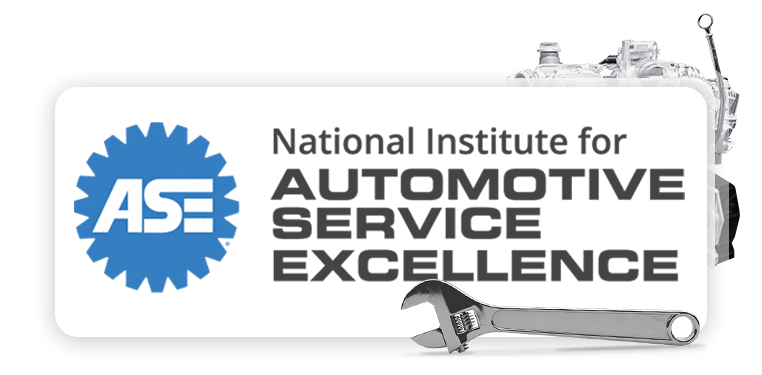Cooling System in
Mooresville, NC
Locally owned, expert service, and trusted care—keeping Mooresville moving forward.
Automotive Services
Cooling System Specialist in Mooresville, NC
Your vehicle’s cooling system is essential to keeping your engine running smoothly and preventing overheating. At STR Automotive, we specialize in cooling system services in Mooresville, NC, ensuring your radiator, water pump, thermostat, and coolant levels are functioning properly.
If your car is running hotter than usual, leaking coolant, or experiencing frequent overheating, it’s time for a professional cooling system inspection. Our ASE-certified Master Technicians use advanced diagnostic tools to detect and repair any issues, ensuring optimal engine performance.
With our warranty, you can trust that your cooling system repairs are completed with precision and reliability.

Routine Car Care
Cooling System Repair in Mooresville, NC
The cooling system in your vehicle plays a critical role in preventing engine damage. It regulates your engine’s temperature by circulating coolant through the radiator and engine block, absorbing and dissipating excess heat.
When any component of the cooling system fails—whether it’s a malfunctioning thermostat, a leaking radiator, or a faulty water pump—your engine is at risk of overheating, leading to costly repairs or even complete engine failure. Regular cooling system maintenance is crucial for keeping your vehicle running efficiently and avoiding unexpected breakdowns.
Ignoring signs of cooling system failure can lead to severe engine damage, reduced fuel efficiency, and poor vehicle performance. If you notice coolant leaks under your car, steam from the engine, or a fluctuating temperature gauge, these are warning signs that your cooling system needs attention.
At STR Automotive, our cooling system repair services address issues before they become major problems. Our ASE-certified technicians perform thorough inspections, flushing old coolant, repairing leaks, and replacing worn-out components to ensure your engine stays cool and runs efficiently.
Why Choose Us
Radiator and Cooling System Service in Mooresville, NC
Why Choose Us?
STR Automotive is Mooresville’s trusted choice for cooling system repairs and maintenance. Our ASE-certified Master Technicians have the experience and knowledge to handle all cooling system issues, from minor coolant flushes to full radiator replacements. With our warranty, you can drive with confidence knowing that your cooling system is in expert hands.
Our Cooling System Service Process
Our service begins with a comprehensive cooling system inspection, checking for leaks, blockages, and worn components. We test the radiator, water pump, thermostat, and hoses to ensure everything is functioning correctly.
If necessary, we flush the old coolant, replace damaged parts, and refill the system with high-quality coolant. After completing repairs, we test the system under real driving conditions to ensure your engine remains at the proper operating temperature.
Key Benefits of Our Cooling System Service:
- Prevents Engine Overheating – Keeps your engine running at an optimal temperature.
- Extends Engine Life – A well-maintained cooling system prevents costly engine damage.
- Improves Fuel Efficiency – A properly functioning cooling system helps your car run more efficiently.
- Expert Technicians – Our ASE-certified team ensures accurate diagnostics and repairs.
- Warranty Protection – All repairs are backed by our 36-month/36,000-mile warranty.
Visit Us Today
Cooling System Repair – Near Me
If you’re searching for “cooling system repair near me” in Mooresville, NC, look no further than STR Automotive. A properly maintained cooling system is essential for preventing overheating, improving performance, and protecting your engine from costly damage.
Whether your car needs a simple coolant flush, a radiator replacement, or water pump repair, our expert technicians have you covered. With our ASE-certified Master Technicians and 36-month/36,000-mile warranty, we guarantee top-quality service you can trust.
Don’t wait for your engine to overheat—schedule your cooling system service at Str Automotive today. Ignoring small issues now can lead to major repairs later. Call us or visit our shop in Mooresville, NC, and let our experts ensure your cooling system is performing at its best.
Your vehicle’s reliability, safety, and efficiency depend on a well-maintained cooling system—book your service today!
What We Offer
Auto Repair & Maintenance
Reliable Car Care in Mooresville, NC
AC Repair & Service
Stay cool year-round with expert A/C repairs. From refrigerant recharges to compressor replacements, we diagnose and fix climate issues efficiently, restoring comfort.
Wheel Alignment
Ensure a smooth and safe ride with precision wheel alignments. We adjust your vehicle’s suspension to manufacturer specs, improving handling, tire life, and fuel efficiency.
Brake Repair & Service
Brakes are vital for safety. We provide expert brake inspections, pad replacements, and rotor resurfacing, ensuring your braking system performs reliably in all conditions.
Get Directions
Our Location
OUR Professional MECHANICS PROVIDE AUTO Repair SERVICES TO THE RESIDENTS OF Mooresville, NC AND NEARBY AREAS
Situated in the heart of Mooresville, Str Automotive is your trusted auto repair destination, providing expert service backed by ASE-certified Master Technicians. Whether you're seeking routine maintenance or complex repairs, our experienced team ensures your vehicle stays in peak condition. Our convenient location allows us to serve drivers from Mooresville and surrounding communities with ease.
We proudly serve customers from the following areas:
- Davidson
- Cornelius
- Huntersville
- Troutman
- Statesville
- Denver
- Sherrills Ford
- Terrell
- Concord
- Kannapolis
- Harrisburg
- Mount Ulla



